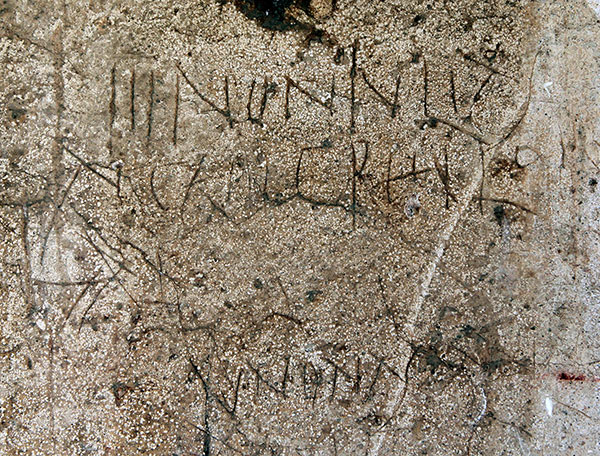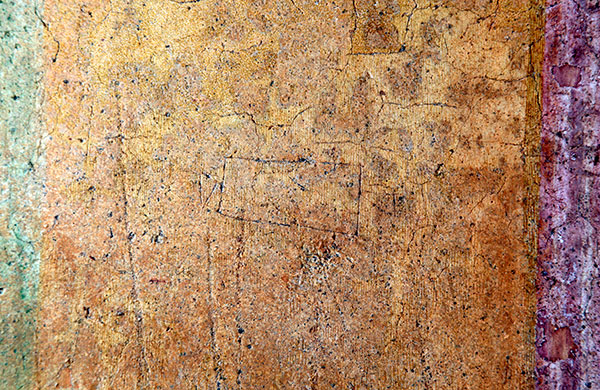By Robert G. Harp

Archaeological sites decay slowly, constantly and often irreversibly. And because of the scarcity of conservation resources, excavated remains are particularly in peril. Such is the case with exposed and partially exposed ancient graffiti at Ostia Antica. Quite regrettably, there are many cases in which graffiti that were plainly visible and readable twenty years ago have now completely disappeared. Digital documentation can preserve these resources and help make them findable and accessible for future research.
The effort to photographically document graffiti at Ostia began more than twenty-five years ago as an initiative by Jan Theo Bakker and the English scholar Eric Taylor. They compiled a list of sources supplemented by items found in the card catalogue in the 'biblioteca' and this list was used as a program for photography. However, in addition, Eric Taylor undertook a more ambitious survey of wall surfaces and pavements within the 'cantiere', with the aim of producing the most complete photographic graffiti archive possible. This archive has now been available to scholars for many years.
The means of photography in that era was of course, conventional photography. In late 2013, recognizing the need to review the existing survey, update and amplify the photographic record with digital images, a team consisting of Francis Brenders, Robert Grady Harp and Phillip Schmitt applied for permission to renew the project and begin work. They also proposed to electronically tag captured images with important data. The information which describes data - called metadata – and the principles of how it is organized and indexed can make a valuable addition to the technical and historical record. Our permesso was granted in 2014.

Ostia Antica.2
In repeat Spring/Autumn visits since then the staff of the Ostia Graffiti project (since joined by Mary Jane Cuyler) have revisited approximately eighty percent of the exposed venues seen by Eric Taylor and many of the protected venues, as well. These include the Caserma dei Vigili, Case a Giardino, Casa delle Muse, Terme del Foro and many others. Preliminary statistics suggest that perhaps thirty percent of the unprotected graffiti previously recorded and others are, due to erosion, collapse of the plastered surfaces, light damage, etc., no longer visible or present on-site. This, we think, underscores the urgency of the project. Recognizing this fact, the staff of the Ostia Graffiti Project have wholly funded the project. However, additional financial assistance and resources are always needed and welcome.
Having systematically documented the bulk of the extant graffiti, the Ostia Graffiti Project will in 2016 turn its attention to the digital documentation of graffiti known to have been preserved on plaster surfaces that have been, over the years, detached and stored onsite at Ostia Antica. These 'distaccati' often very heavy and unwieldy, pose new challenges and also new opportunties for the recovery and documentation of ancient graffiti at Ostia Antica. We invite you to join us in supporting this important work.
- Notes:
- Photo 1:Most of these kind of graffiti are dates related to the receiving of money. In this case a year has not been found. Sometimes text was cancelled by horizontal lines. For some reason, during a number of months, registration took place on a wall. Quite interesting is the text: "On August 28 it is thundering here" (hic tonat). A reference to a thunderstorm seems unlikely. Perhaps a quarrel is meant, or even an earthquake. (source http://www.ostia-antica.org)
- Photo 2:These rectangular frames were commonly used for inscriptions and ornamentations, here at Ostia and also in sarcophagus inscriptions from the third century, C.E.






 We are committed to providing versions of our articles and interviews in several languages, but our first language is English.
We are committed to providing versions of our articles and interviews in several languages, but our first language is English.